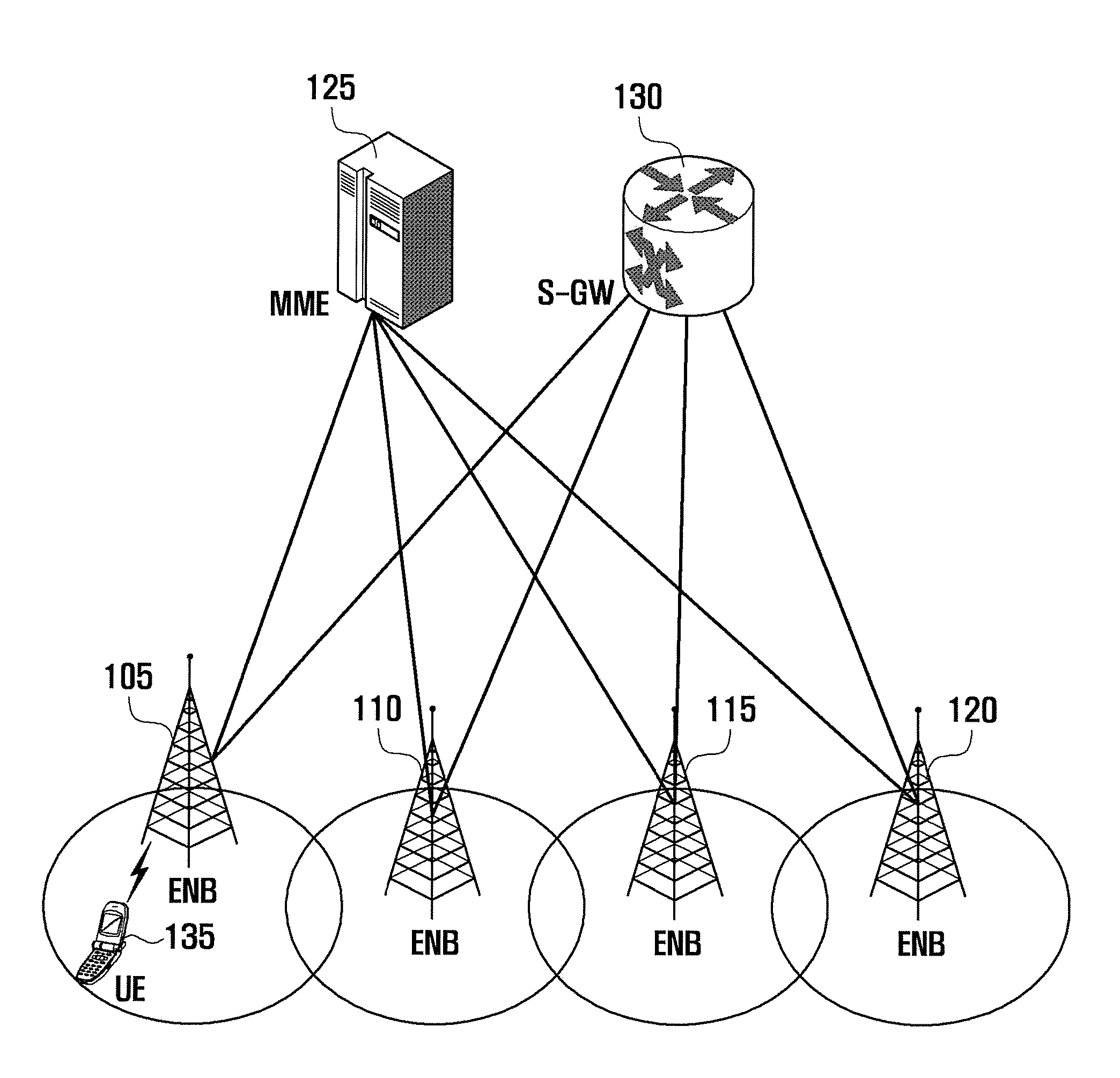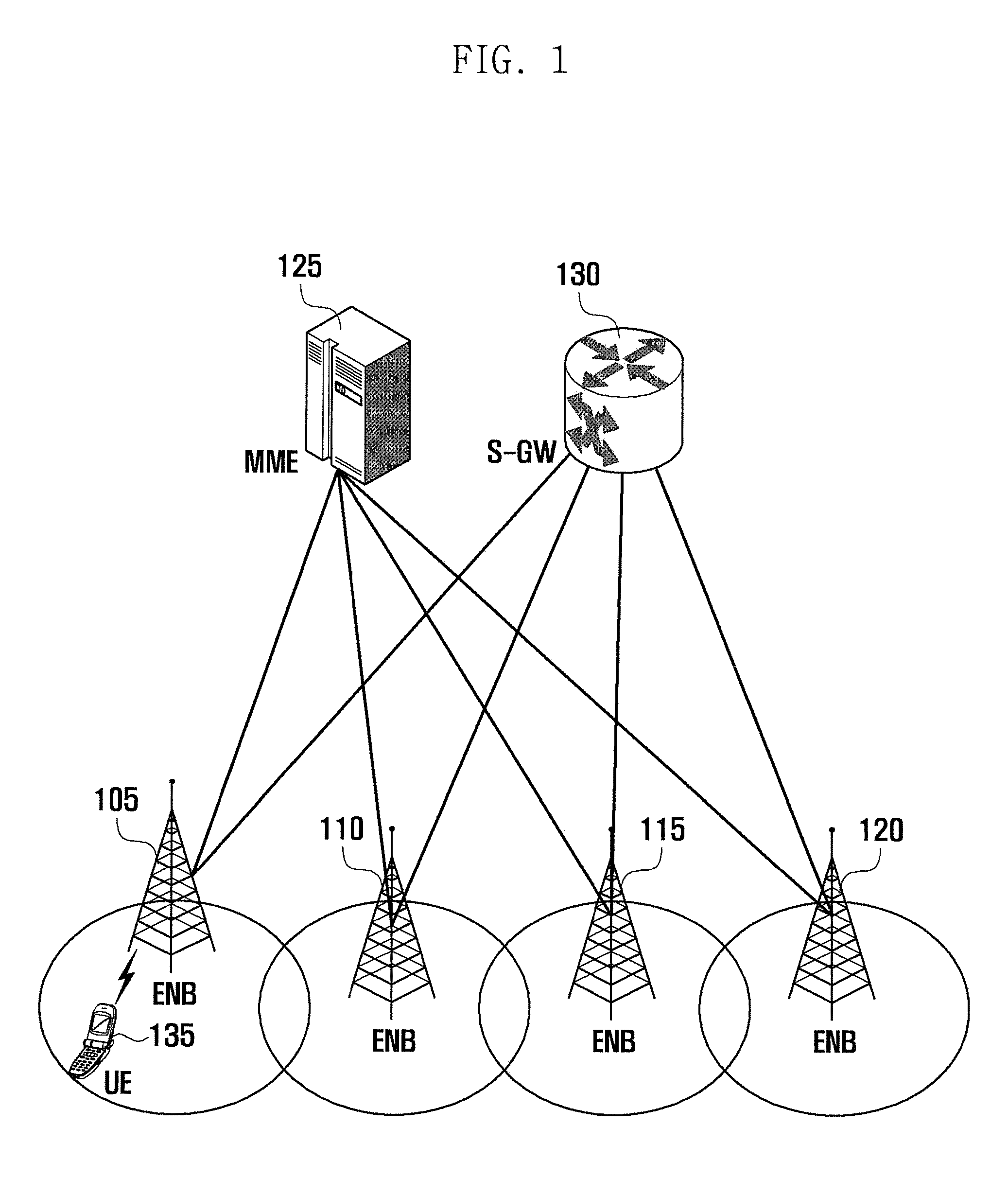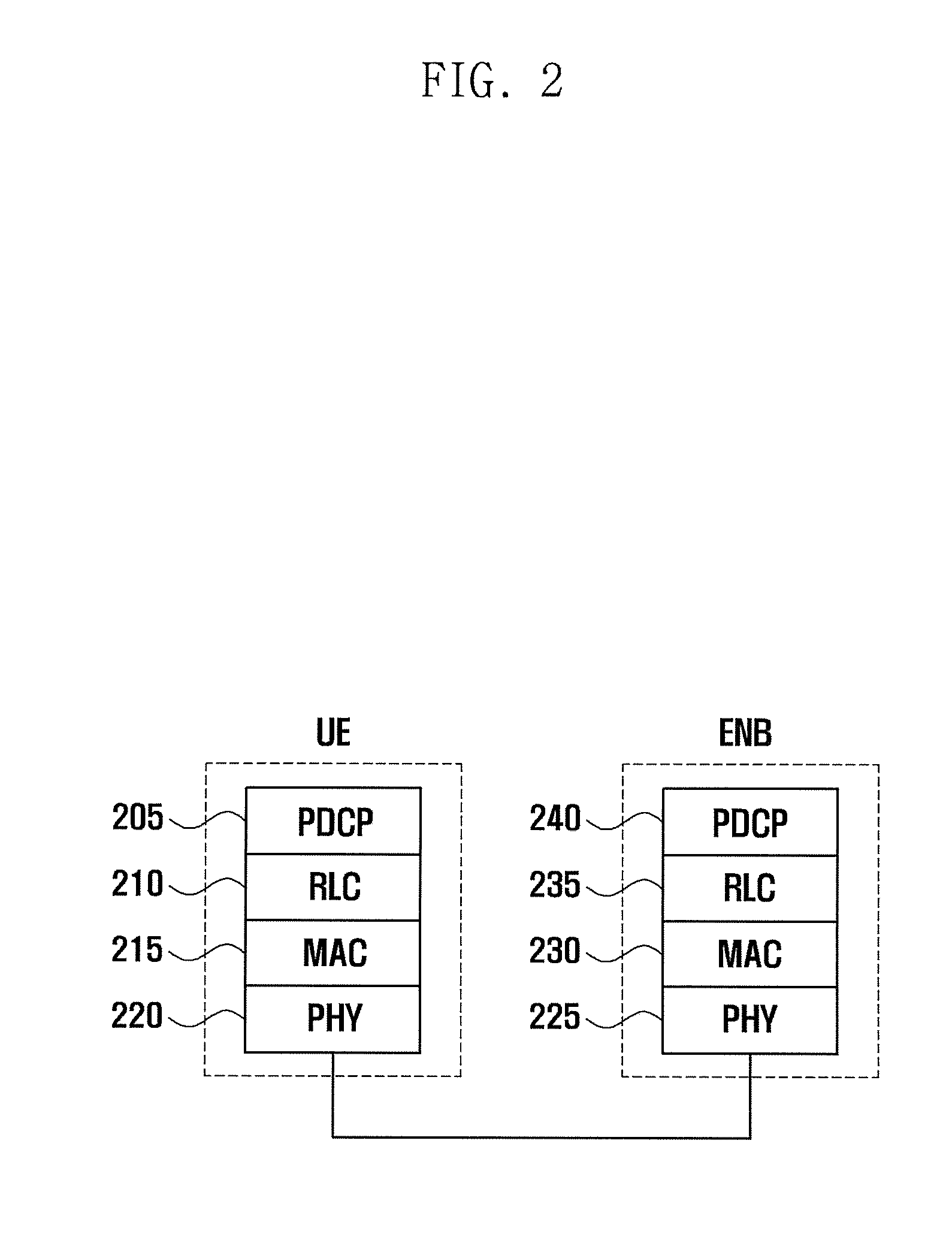Method and device for performing handover in mobile communication system
a mobile communication system and handover technology, applied in the direction of wireless commuication services, synchronisation arrangements, connection management, etc., can solve the problems of handover failure and significant issues such as supporting mobility, and achieve the effect of efficiently reporting channel state information
- Summary
- Abstract
- Description
- Claims
- Application Information
AI Technical Summary
Benefits of technology
Problems solved by technology
Method used
Image
Examples
second embodiment
[0092]In order to accomplish the above objective, the LTE mobile communication system adopts Discontinuous Reception operation which allows the UE to transmit uplink control signal only in the active time to minimize UE power consumption. However, the current discontinuous reception operation is inefficient for the service generating uplink data periodically such as VoIP.
[0093]This is because the UE has to check PDCCH at every 8 ms per HARQ process to determine whether to apply adaptive retransmission.
[0094]FIG. 6 is a diagram illustrating uplink transmission in the LTE system.
[0095]Referring to FIG. 6, the uplink transmission resource is the frequency / time resource. In the LTE mobile communication system, the unit transmission resource is defined by a frequency band having a predetermined width during a timeslot having a predetermined length. One regular quadrilateral denotes the unit transmission resource, and the unit transmission resource is referred to as resource block. The re...
third embodiment
[0181]In order to increase the data rate of the UE, a technique called carrier aggregation for aggregating multiple serving cells for one UE is introduced.
[0182]FIG. 11 is a diagram illustrating the carrier aggregation.
[0183]Referring to FIG. 11, an eNB transmits and receives multiple carriers across several frequency bands in general. For example, in the case that the eNB 105 transmit the carrier 1115 having the downlink center frequency f1 and the carrier 1110 having the downlink center frequency f3, If the carrier aggregation is not supported as in the conventional technology, the UE has to transmit / receive data using one of the two carriers. However, the eNB can allocate more carriers to the UE 1130 having the carrier aggregation capability depending on the situation so as to increase the data rate of the UE 1130. The technique of aggregating the downlink carriers or uplink carriers as described above is referred to as carrier aggregation.
[0184]The terms to be used in the follow...
fourth embodiment
[0259]When a plurality of serving cells are configured to a UE, TAG is used for managing the uplink transmission timings of the serving cells efficiently. The TAG includes at last one serving cell, and at least one TAG is configured to one UE. The serving cells belonging to a TAG share the same uplink transmission timing. The TAG including the PCell is referred to as P-TAG, and the TAG consisting of SCells is referred to as S-TAG.
[0260]The eNB has to configure the TAG to the UE appropriately in consideration of the UE location, and it may be necessary to reconfigure the current TAG of the UE as the UE moves. If a serving cell belonging to a TAG moves to another TAG, the UE has to change the uplink transmission timing of the serving cell in adaptation to the new TAG. At this time, changing the transmission timing abruptly is neither possible nor preferable. The eNB and the UE stop downlink / uplink transmission in the serving cell and, when the reconfiguration occurs, deactivate the se...
PUM
 Login to View More
Login to View More Abstract
Description
Claims
Application Information
 Login to View More
Login to View More - R&D
- Intellectual Property
- Life Sciences
- Materials
- Tech Scout
- Unparalleled Data Quality
- Higher Quality Content
- 60% Fewer Hallucinations
Browse by: Latest US Patents, China's latest patents, Technical Efficacy Thesaurus, Application Domain, Technology Topic, Popular Technical Reports.
© 2025 PatSnap. All rights reserved.Legal|Privacy policy|Modern Slavery Act Transparency Statement|Sitemap|About US| Contact US: help@patsnap.com



